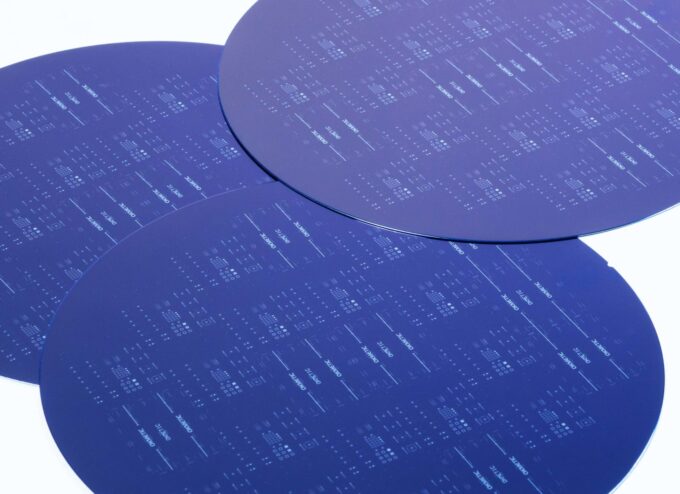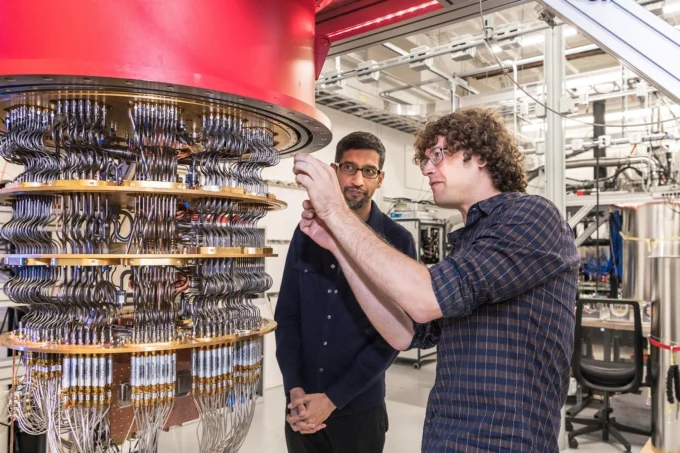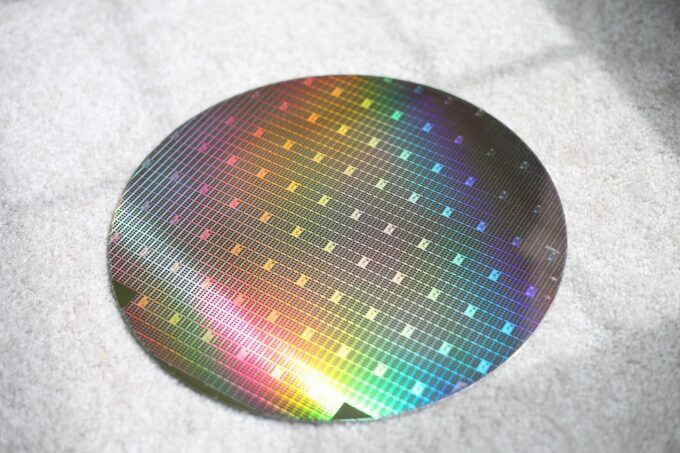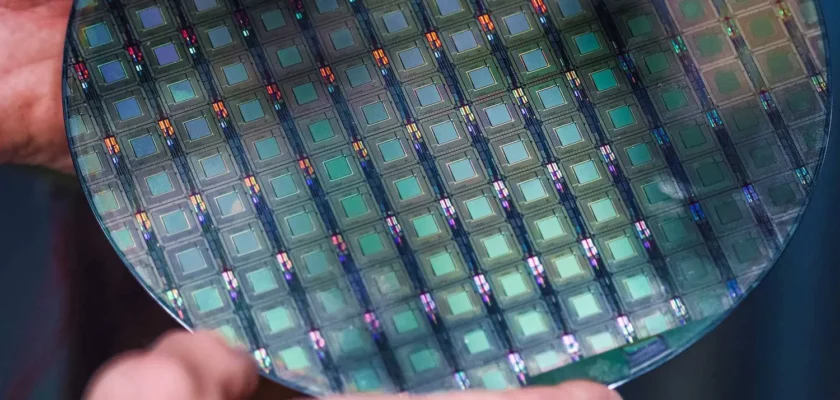Patterned wafers are essential components in the production of semiconductor chips used in electronic devices. With the emergence of new technologies such as quantum computing, the need for more advanced patterned wafers has become increasingly important. This article will discuss the role of patterned wafers in emerging technologies, such as quantum computing.
What are Patterned Wafers?

Source:pinterest.com
Patterned wafers are thin slices of silicon that have been patterned with intricate designs that are used to create semiconductor chips. The wafers are produced by a process known as photolithography, which involves coating a silicon wafer with a photosensitive material and exposing it to ultraviolet light. The areas of the photosensitive material that are exposed to light become hard, while the areas that are not exposed remain soft. The soft areas are then washed away, leaving behind a patterned surface that can be used to create semiconductor chips.
The Role of Patterned Wafers in Emerging Technologies
Quantum Computing
Quantum computing is a new computing paradigm that has the potential to revolutionize the way we process information. It uses quantum bits, or qubits, which can exist in multiple states at the same time, unlike traditional bits, which can only exist in two states (0 or 1).
Features of Quantum Computing
Quantum computing is designed to be faster and more efficient than classical computing. Some of the key features of quantum computing include:
- Quantum Bits (Qubits): Quantum computing uses qubits, which can exist in multiple states at the same time. This allows quantum computers to perform certain calculations much faster than classical computers.
- Superposition: Qubits can exist in multiple states at the same time, a property known as superposition. This allows quantum computers to perform many calculations at once.
- Entanglement: Qubits can become entangled, which means that the state of one qubit is dependent on the state of another qubit. This allows quantum computers to perform calculations that are impossible with classical computers.
Benefits of Quantum Computing

Source: foreignpolicy.com
The benefits are significant and will have a significant impact on the way we process information. Some of the key benefits include:
- Faster Calculations: Quantum computing has the potential to solve certain problems much faster than classical computers. This includes problems related to cryptography, optimization, and simulation.
- Increased Efficiency: It can perform many calculations at once, which means that it can process information more efficiently than classical computers.
- New Applications: It can enable new applications, such as quantum cryptography, simulation, and machine learning.
Challenges of Quantum Computing
While the benefits are significant, some challenges need to be addressed. Some of the key challenges include:
- Technical Complexity: It is a highly technical field that requires expertise in physics, computer science, and mathematics.
- Scalability: Quantum computers are currently limited in size and complexity, which means that they can only solve certain types of problems.
- Error Correction: They are prone to errors due to factors such as noise and decoherence. This means that error correction is a significant challenge.
5G Technology

Source: networkworld.com
5G technology is the fifth generation of wireless communication. It promises to deliver faster speeds, lower latency, and increased capacity. It is expected to revolutionize the way we interact with the world around us and provide the foundation for the next generation of innovation. In this section, we will explore 5G in depth, including its features, benefits, and challenges.
Features of 5G Technology
5G technology is designed to be faster and more efficient than its predecessors. Some of the key features of 5G technology include
- Increased Speeds: 5G promises to deliver speeds up to 100 times faster than 4G technology.
- Lower Latency: 5G is designed to have lower latency, which means that data will travel faster from the source to the destination.
- Increased Capacity: 5G is designed to handle more data traffic than previous generations of wireless communication technology.
Benefits of 5G Technology
The benefits are numerous and will have a significant impact on the way we interact with the world around us. Some of the key benefits include
- Faster Download and Upload Speeds: 5G will enable faster download and upload speeds, making it easier to stream videos, download large files, and share content.
- Lower Latency: 5G technology will reduce latency, which means that the time it takes for data to travel from the source to the destination will be significantly reduced. This will improve the overall user experience.
- Improved Connectivity: 5G will improve connectivity in areas that were previously difficult to reach, such as rural areas and underground locations.
- Enhanced Mobile Experiences: 5G will enable new mobile experiences, such as augmented reality, virtual reality, and mixed reality.
Challenges of 5G Technology
While the benefits are significant, there are also some challenges that need to be addressed. Some of the key challenges include:
- Infrastructure: 5G technology requires a significant investment in infrastructure, including new cell towers and fiber optic cables.
- Security: 5G will create new security challenges, including the potential for cyberattacks and the need for increased encryption.
- Compatibility: 5G technology may not be compatible with existing devices, which could create a divide between users who have access to 5G and those who do not.
Internet of Things (IoT)
The Internet of Things (IoT) is a network of interconnected devices that can communicate with each other and exchange data. The production of IoT devices requires highly precise patterned silicon wafers, as the devices must be small and efficient.
Moreover, IoT devices require different materials than those used in traditional chips. For example, IoT devices often use flexible materials such as plastic, which require a different type of patterning process than traditional silicon chips.
Conclusion

Source: electronics.stackexchange.com
Patterned wafers are essential components in the production of semiconductor chips used in electronic devices. With the emergence of new technologies such as quantum computing, 5G technology, and the Internet of Things (IoT), the need for more advanced patterned wafers has become increasingly important. The production of these patterned wafers requires highly precise and advanced manufacturing processes, as well as the use of different materials than those used in traditional chips. As these emerging technologies continue to develop, the role of patterned wafers will become even more critical in shaping the future of the electronics industry.

